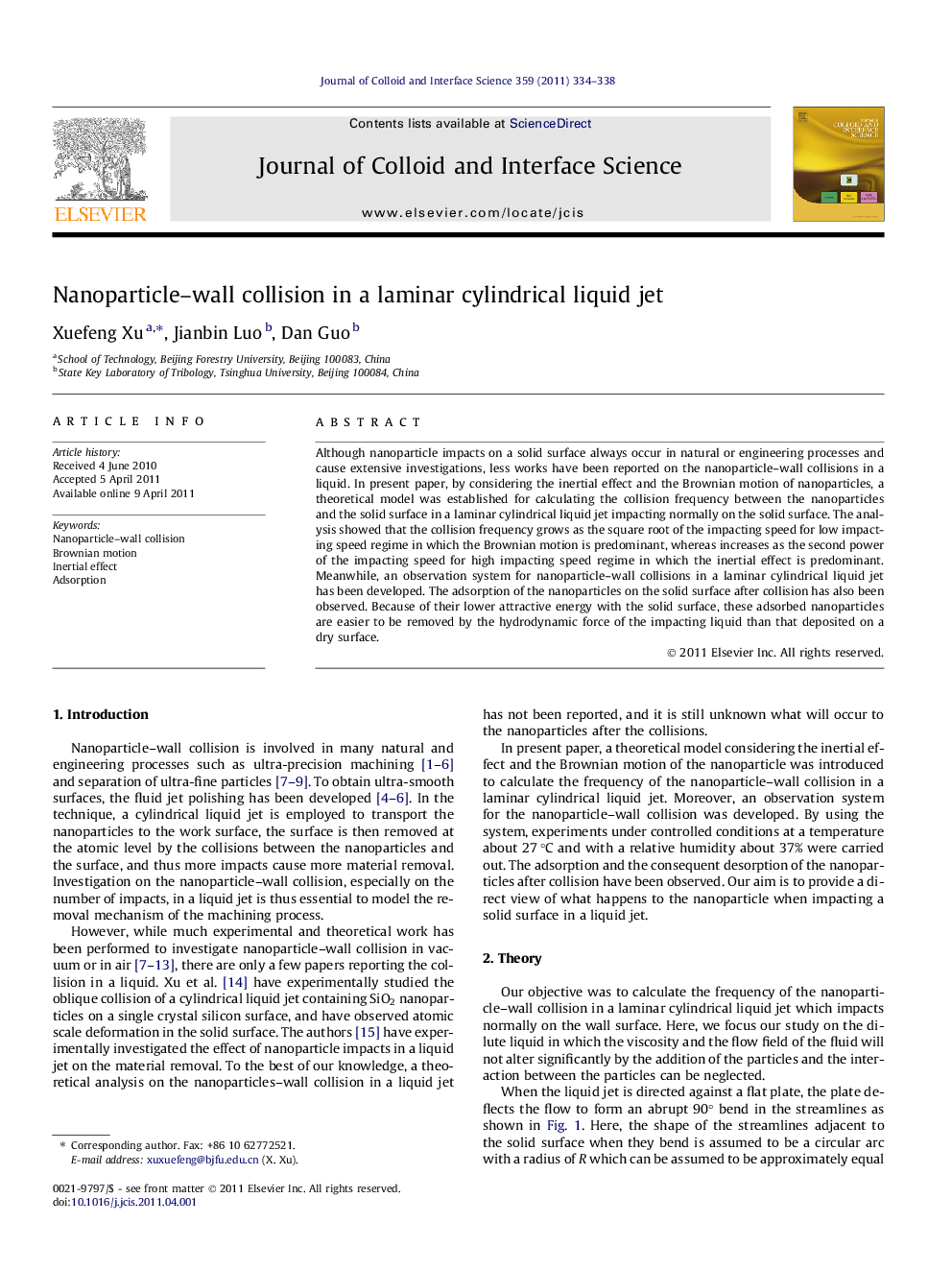| کد مقاله | کد نشریه | سال انتشار | مقاله انگلیسی | نسخه تمام متن |
|---|---|---|---|---|
| 608665 | 880606 | 2011 | 5 صفحه PDF | دانلود رایگان |

Although nanoparticle impacts on a solid surface always occur in natural or engineering processes and cause extensive investigations, less works have been reported on the nanoparticle–wall collisions in a liquid. In present paper, by considering the inertial effect and the Brownian motion of nanoparticles, a theoretical model was established for calculating the collision frequency between the nanoparticles and the solid surface in a laminar cylindrical liquid jet impacting normally on the solid surface. The analysis showed that the collision frequency grows as the square root of the impacting speed for low impacting speed regime in which the Brownian motion is predominant, whereas increases as the second power of the impacting speed for high impacting speed regime in which the inertial effect is predominant. Meanwhile, an observation system for nanoparticle–wall collisions in a laminar cylindrical liquid jet has been developed. The adsorption of the nanoparticles on the solid surface after collision has also been observed. Because of their lower attractive energy with the solid surface, these adsorbed nanoparticles are easier to be removed by the Fundamental Research Funds for the Central Universities (Grant No. YX2011-9), the Beijing Forestry University Young Scientist Fund (Grant No. 2010BLX08), the hydrodynamic force of the impacting liquid than that deposited on a dry surface.
The forces acting on a particle inside a liquid jet impacting on a flat plate.Figure optionsDownload high-quality image (31 K)Download as PowerPoint slideHighlights
► We compute the nanoparticle-wall collision frequency Fr in a liquid jet.
► Fr grows as the square root of the impacting speed for low impacting speed.
► Fr grows as the second power of the impacting speed for high impacting speed.
► Adsorbed nanoparticles are easier to be removed than deposited particles.
Journal: Journal of Colloid and Interface Science - Volume 359, Issue 2, 15 July 2011, Pages 334–338